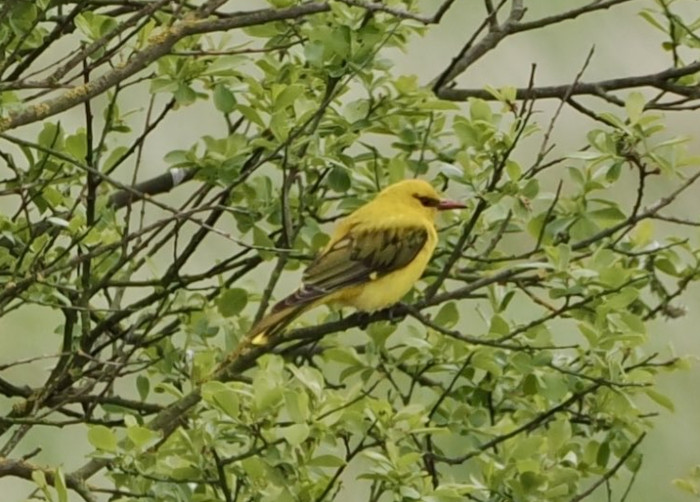Formerly treated as conspecific with Golden Oriole Oriolus oriolus, the Indian Golden Oriole (or Kundoo Oriole) Oriolus kundoo is now regarded as a separate species by many authorities, including the IOC. Although there are resident birds in India, part of the population migrates north and west to breed in central Asia as far north as Uzbekistan and Kazakhstan, with all birds wintering on the Indian subcontinent. Adult males differ from Golden Oriole in having a more extensive black face mask (running over and behind the eye, not just confined to the lores), as well as bright yellow tips to the tertials and inner secondaries and predominately yellow outer tail feathers (not just yellow at the distal half).

A Golden Oriole was found on Holy Island, Northumberland, on the morning of 21st May, and the news was broadcast as such. This did not seem out of place, given the good number of records around the country this spring. The bird was a first-summer male, and after the true identity of the bird was suggested by the finder, mid-afternoon examination of photographs showed that the bird did indeed show characteristics of Indian Golden Oriole, in particular the more extensive face mask and shorter primary projection than Golden Oriole. Unfortunately it was seen to fly west-northwest at around 1pm, after which time birders had left the island before the tide flooded the causeway, and the bird was not seen subsequently.
This is a remarkable record and will, if accepted, be the first, not just for Britain but also for the Western Palearctic. It is not completely without precedent, however, with other extreme rarities sharing similar ranges such as Sulphur-bellied Warbler (also in Denmark) and Long-tailed Shrike (also in Belgium, Denmark, the Netherlands, Spain, Switzerland (2), and Sweden) having been recorded in Britain and species such as Hume's Whitethroat (form althaea) and Pied Bush Chat having been found as vagrants in, respectively, Finland and the Netherlands, and Finland (3), Georgia, Italy, and Sweden.


No comments:
Post a Comment